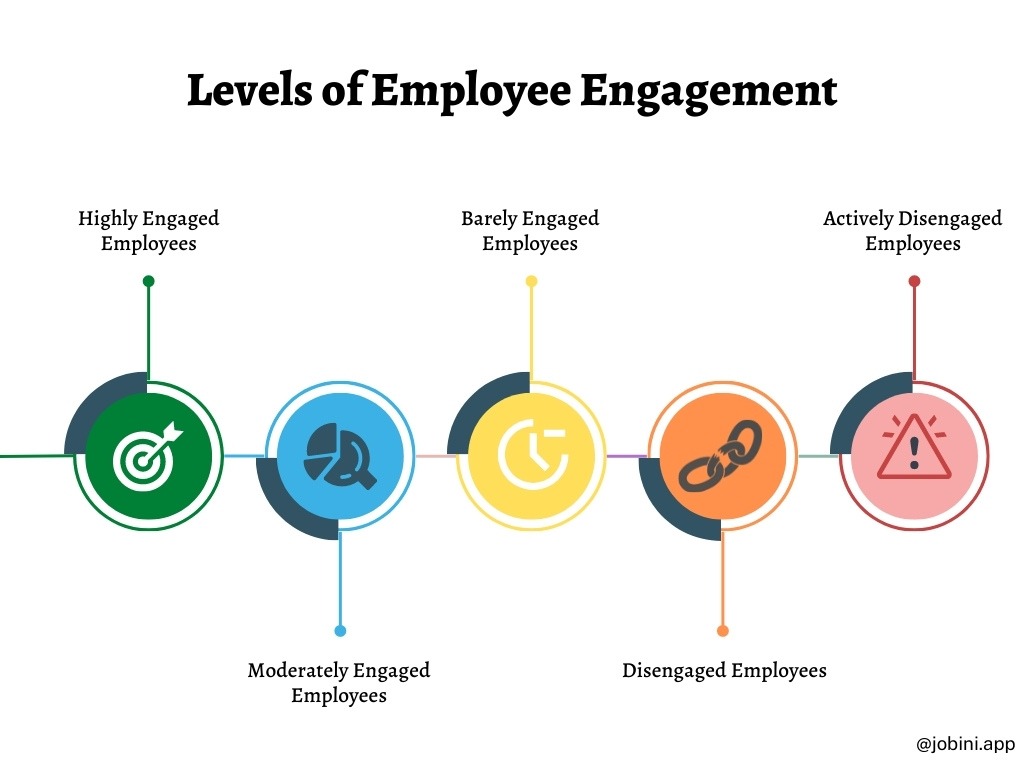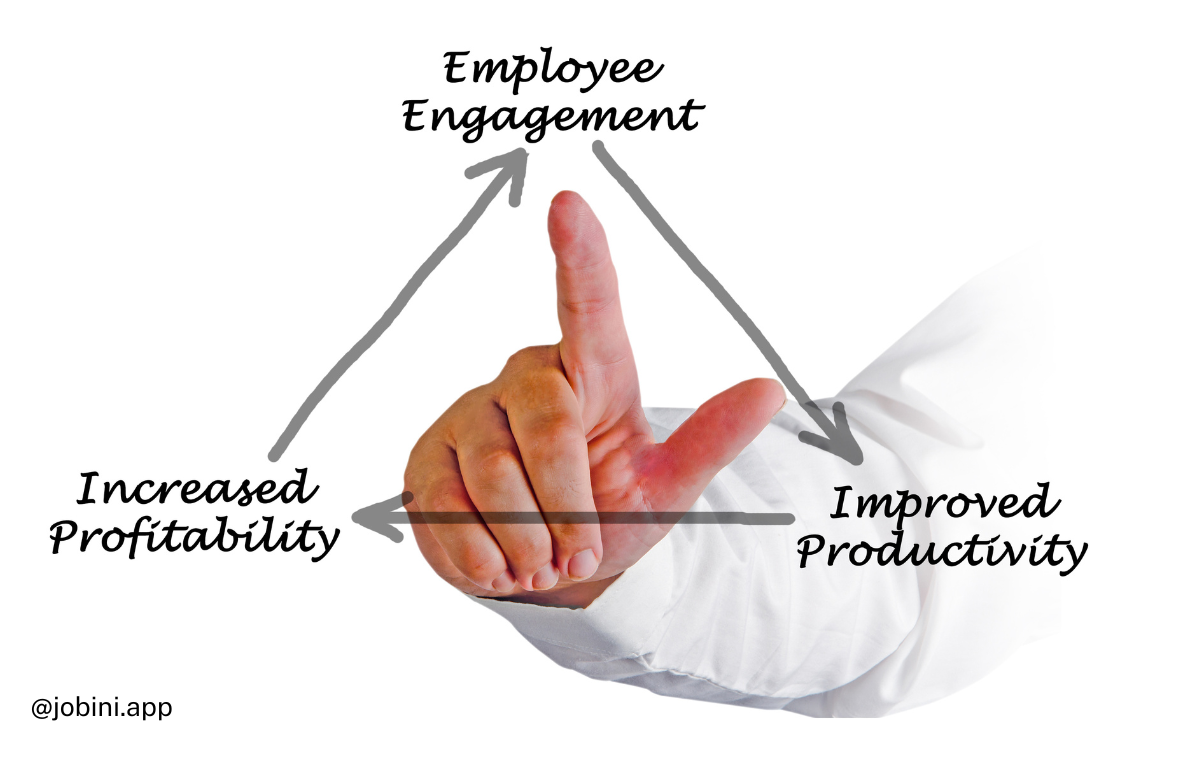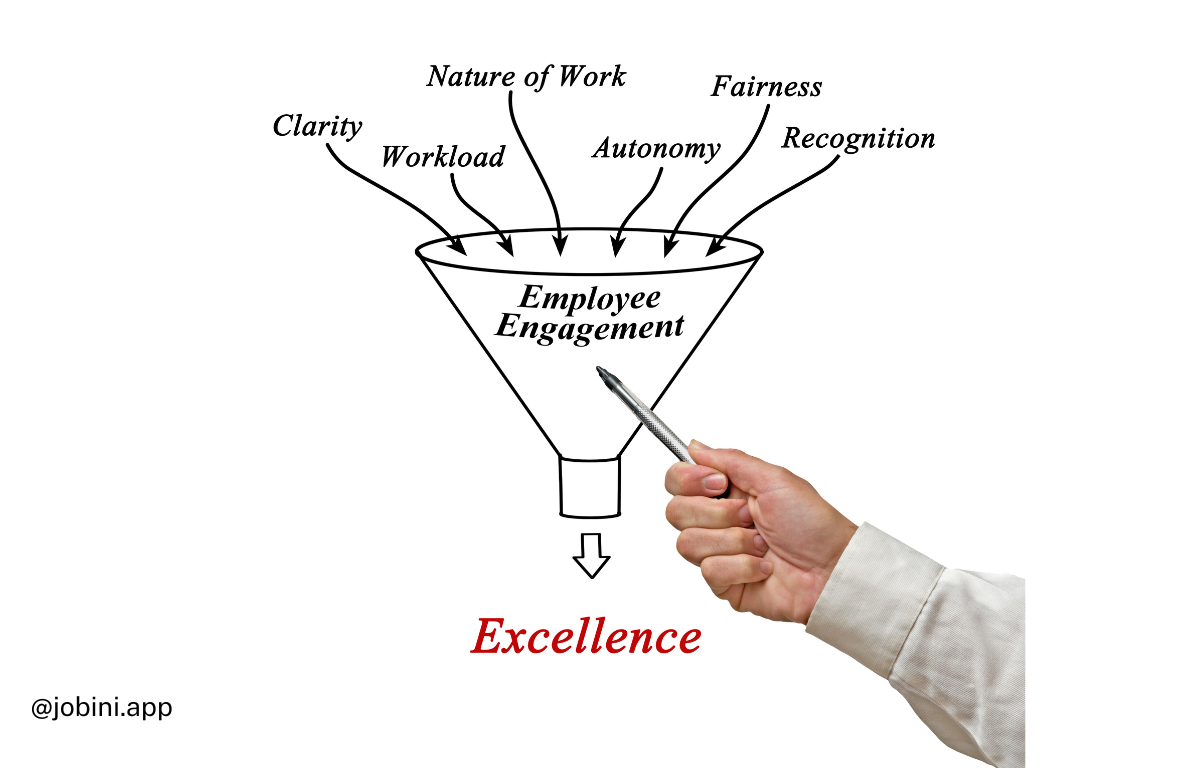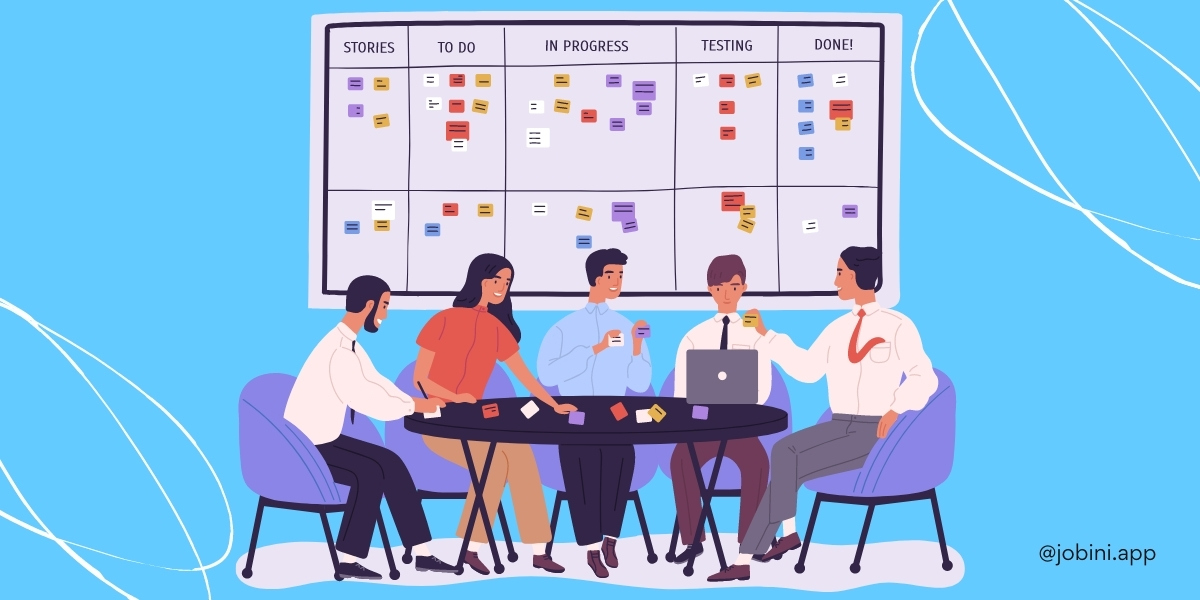The Ultimate Guide For Better Employee Engagement

The Ultimate Guide For Better Employee Engagement
Are you struggling to keep your employees engaged? Feeling like you're doing all you can, but it's not enough? You're not alone. According to a recent study by Gallup, only 36% of employees in the United States are actively engaged in their work. It means that most people are either completely disengaged (not caring about their work and putting minimal effort into it) or simply indifferent (going through the motions but not really putting any thought or passion into it).
So what can you do to change this? How can you get your employees more invested in their work and make them happier and more productive?
This guide will explore some of the best ways to improve employee engagement. We'll cover everything from setting clear goals and expectations to providing feedback and recognition. By the end, you should have a good and clear understanding of what it takes to engage and connect employees and get them excited about their work. Let's get started!
Employee Engagement - What Does it Mean?
Employee engagement is a term used to define the "level of enthusiasm, commitment, and energy employees put into their work and company." In other words, employee engagement can also be defined as the "extent to which employees feel invested in their work and are committed to the success of their organization." A highly engaged employee is someone who is enthusiastic about his job and feels a sense of ownership in the company's success or failure.
Why is employee engagement important? Employee engagement is a key driver of business success, as it leads to higher levels of productivity and profitability. A recent study by Gallup found that companies with actively engaged employees are 23% more profitable than those with low levels of engagement.

Employee Engagement Levels
Employee engagement is key to a productive, profitable workplace. The more engaged employees are, the more productive they are likely to be. Commonly, there are five levels of employee engagement. Which are:
-
Highly Engaged Employees
-
Moderately Engaged Employees
-
Barely Engaged Employees
-
Disengaged Employees
-
Actively Disengaged Employees

Each level has its own unique characteristics, which will be explored in detail below.
1) Highly Engaged Employees:
This is the top level of employee engagement and comprises individuals who are fully committed to their work and company. They have a positive emotional connection with their job and feel a sense of purpose in what they do. They are constantly looking for ways to improve their skills and contribute to their team's success. These employees are highly productive and usually have a positive attitude towards change.
2) Moderately Engaged Employees:
This group constitutes the majority of workers in any organization. They may not be as passionate about their job as the highly engaged employees, but they still care about their work and feel meaningful relationships with their company. They generally put in enough effort to get the job done but aren't going above and beyond what's expected. They may not be vocal about it, but they're generally content with their current situation.
3) Barely Engaged Employees:
These individuals are only marginally connected to their work and company. They do the bare minimum required and often lack enthusiasm for their job. They may be looking for another opportunity but haven't yet taken any steps to find one. This group is usually unengaged with company initiatives and lacks loyalty to their employer.
4) Disengaged Employees:
These workers have completely checked out of their job. They're unhappy with their work situation and feel no emotional connection to their company. They likely see no opportunity for growth or advancement in their current role. Disengaged employees are often unproductive and can negatively influence those around them.
5) Actively Disengaged Employees:
This is the lowest level of employee engagement and is made up of individuals who are unhappy with their job and actively trying to make things worse for their team and company. They spread negativity, sabotage projects, and generally make it difficult for those around them. These employees are usually in the minority but can significantly impact an organization if left unchecked.
Benefits of Engaged Employees
Engaged employees are one of the most important assets to any company. They are the ones who are passionate about their work and who want to see the company succeed.

Here are some of the most notable benefits of having engaged employees:
1) Increased Productivity
Engaged employees are highly productive. They are always looking for ways to improve their work and make things more efficient. This increased productivity leads to better business outcomes.
2) Improved Quality of Work
When employees are engaged, they care about the quality of their work. They want to do a good job and take pride in their work. This leads to improved quality of work overall.
3) Greater Customer Satisfaction
Engaged employees are also more likely to provide excellent customer experience service. They understand the importance of happy customers and will go above and beyond to ensure their satisfaction.
4) Higher Retention Rates
Engaged employees are more likely to stay with a company for the long haul. They are invested in the company and want to see it succeed. This leads to higher employee retention rates and less turnover.
5) Increased Profitability
Happy and engaged employees lead to increased profitability. When employees are motivated and feel like they are part of something larger, they are more likely to work harder and be more productive. This ultimately leads to increased profits for the company.
Drivers of Employee Engagement
Employee engagement is a critical driver of organizational success. Happy and highly engaged employees lead to companies with lower staff turnover, less absenteeism, and improved productivity.

Many factors contribute to employee engagement, but the following six are among the most important:
-
Clarity about the organization's mission, vision, and values:
If employees don't know the company's core missions, it's hard to engage employees in their work. They need to understand the company's bigger picture and how their role fits into it.
-
A sense of purpose:
Employees who feel they are working towards something larger than themselves are more likely to be engaged in their work. Purpose-driven companies often see higher levels of employee engagement.
-
Career growth opportunities:
Employees who feel like they have opportunities to grow and develop within their company are more likely to be engaged than those who feel stuck in a dead-end job.
-
A positive workplace culture:
Positive company culture can drive employee engagement initiatives emphatically. Employees who feel like they belong to a positive, supportive work environment are more likely to be engaged in their work.
-
A fair and equitable compensation package:
Employees who feel fairly compensated for their work are more likely to be engaged than those who feel underpaid or undervalued.
-
Recognition and appreciation:
Employees who feel appreciated by their company are more likely to be engaged than those who feel taken for granted. A little bit of recognition can go a long way in keeping employees engaged and thus motivate employees' engagement.
If you're struggling with low employee engagement, it's important to look at these potential drivers and see if any of them are missing in your organization. Once you identify the missing driver (i.e., cause of low employee engagement), you can start working on its solution.
Key Stakeholders in Driving Employee Engagement
There are a number of key stakeholders who play an important role in driving employee engagement within an organization. These include senior leaders, managers, HR professionals, and employees themselves.

Each of these groups has a unique perspective and set of responsibilities regarding employee engagement. Here's a closer look at each of their roles and responsibilities:
Role of Senior Leaders
Senior leaders must create a vision and strategy for engagement that aligns with the organization's overall goals. They must ensure that the company values its employees and has a clear engagement strategy. Leaders should also be visible and accessible and take an active role in supporting employee engagement initiatives.
Role of Managers
Managers are responsible for engaging their employees and creating a productive work environment. They need to be aware of the factors that affect employee engagement and take steps to address any issues. Managers and direct supervisors should also be proactive in identifying and addressing potential problems before they become serious.
Role of Human Resource Professionals
HR leaders are vital in designing and implementing engagement efforts and initiatives. They also work closely with managers to help them understand and communicate the importance of employee engagement and effectively utilize all the best human resources and capital available. HR leaders must understand the factors that affect human resources engagement and develop strategies to improve it.
Role of Employees Themselves
Employees themselves are a key stakeholder group that drives employee engagement. They need to know what engagement means and how it can benefit them. They need to be motivated to engage other employees in their work and take an active role in their development. Employees should also be aware of the factors that affect their engagement and work to address any issues. They also need to feel empowered to take action and make a difference in their workplace. And if it does —employees develop a true sense of ownership over their jobs, thus increasing productivity.
Hence, when all of these stakeholders are working together effectively, employee engagement can be a powerful force for positive organizational change.
Strategies to Improve Employee Engagement
Many key performance indicators enhance employee experience and engagement in the workplace. Some companies opt for employee recognition programs, while others focus on creating a positive work environment.

Here are some common strategies to inspire employees engagement in the workplace:
Employee Recognition Programs
One way to improve employee engagement is to implement an employee recognition program. This can involve giving employees awards for their achievements or simply acknowledging their good work in front of their colleagues. Recognizing your employees' hard work will make them feel appreciated and motivated to continue doing their best.
Create a Positive Work Environment
Another way to increase employee engagement is to create a positive work environment. This means ensuring that your employees feel comfortable and supported in their roles. You can do this by giving them the resources they need to succeed and regular employee feedback. Creating a positive work environment will make your employees feel valued and appreciated and encourage them to stay with your company.
Communicate Openly and Frequently
Open communication is key to keeping employees engaged. Ensure you regularly share information about the company's goals, progress, and challenges. Encourage employees to share their ideas and employee feedback. And be sure to listen to what they have to say!
Encourage Employee Input
Encouraging your employees to give their input is another great technique for enhancing and maintaining employee engagement. When you ask for your employees' opinions, you show that you value their ideas and suggestions. This will make them feel more invested in their work and encourage them to develop new and innovative ideas.
Provide Opportunities for Growth
Employees who feel stuck in a dead-end job are likely to be disengaged. Offer opportunities for employees to grow and develop their skills. This could include training programs, mentorship opportunities, or special projects. When you invest in your employees' personal growth, you show that you value their contributions to your company.
Promote a Positive Work-life Balance
Encourage your team to take advantage of flexible work arrangements and ensure they have the support they need to manage their workloads healthily.
Foster a Collaborative Environment
Encourage teamwork and collaboration among your employees. Create opportunities for employees to work together on projects and solve problems as a group.
Incorporate Technology in the Work Culture
Many factors can affect employee engagement, from company culture to job satisfaction. However, one of the most important things you can do to measure employee engagement is to invest in employee engagement software. Employee engagement software like Workvivo, Slack, Asana, Hubstaff, etc., helps employees feel more connected to their work and company. It also provides a way for managers to track employee engagement and identify areas where improvement is needed.
Improving employee engagement can seem daunting, but it is well worth the effort. By implementing some or all of the employee engagement strategies outlined above, you can create a work environment that inspires employees to give their best and drives better performance.
Measuring the Success of Your Employee Engagement Strategy
It's no secret that employee engagement is critical to an organization's success. But how do you know if your employee engagement strategies are working?
There are a few key metrics you can use to measure the success of your employee engagement strategies:
1) Employee Retention Rates
Employee retention rates are one of the most important metrics to track when measuring the success of your employee engagement strategy. If you're seeing a higher employee turnover rate, it's a sign that your employees are not happy and are leaving for other opportunities. Monitoring your retention rates will give you a good idea of how well your employee engagement efforts are working.
2) Job satisfaction levels
Employee satisfaction levels are another important metric to track. You can measure employee engagement or satisfaction levels by conducting employee engagement surveys or using employee engagement research scorecards. If you see a decrease in job satisfaction levels, it's a sign that your employee engagement strategy is not working as effectively as it should be.
3) Employee productivity levels
Engaged employees are typically more productive than their disengaged counterparts. One way to measure employee engagement and productivity is to track business outcomes such as sales, revenue, or the number of completed projects. Increases in employee productivity can also be indicative of a successful employee engagement strategy.
4) Employee engagement scores
You can also track employee engagement scores over time to see if your strategy is having an impact. An employee engagement survey can provide valuable insights into how employees feel and whether they're more or less engaged than they were in the past.
5) Exit interview data
Exit interviews can also provide insights into why employees are leaving and whether employee engagement levels play a role. If you see a decrease in the number of employees citing engagement-related issues, it may be indicative of improved employee engagement levels.
6) Employee engagement survey results
Asking employees directly about their level of engagement can also provide valuable insights. Employee engagement surveys can help you identify areas where your strategy is working well and where there's room for improvement.
7) Focus group feedback
Another way to gauge employee engagement levels is to solicit employee feedback in focus groups. This can be a valuable way to get candid, honest, and actionable feedback about how employees are feeling and what they think of your employee engagement strategy.
8) Net promoter score (NPS)
The net promoter score (NPS) measures customer loyalty and satisfaction and can also gauge employee engagement. If most employees are happy with their work, they're more likely to work in a way that boosts customer loyalty and overall business outcomes.
9) Customer satisfaction levels
Finally, you can also track customer satisfaction levels to see if your employee engagement strategy is having an impact. If you see an increase in customer engagement and satisfaction, it may be because the number of engaged employees is increasing and motivates them to provide excellent customer service.
Maintaining Employee Engagement for the Long Term
It is no secret that employee disengagement is a pressing concern for businesses worldwide. This has serious consequences for companies, as those employees who are not engaged tend to be less productive and more likely to leave their jobs.
So what can be done to maintain employee engagement for the long haul? Employee engagement cannot be achieved through a mechanical approach that tries to extract discretionary effort by manipulating employees' commitment and emotions. Employees see through such attempts very quickly and can become cynical and disillusioned. Engagement must be built on trust, respect and mutual understanding. It starts with effective leadership, which creates a shared vision and purpose and sets the tone for how employees are treated.

Many companies turn to incentive programs or other forms of motivation to boost employee engagement, but these often fail in the long run. Employee engagement is key to creating a company culture that supports and encourages creativity and innovation. By allowing employees to use their creative abilities, you show them that you value their contributions and want them to be part of the solution.
To engage employees, businesses need to focus on three key areas:
-
Communication
-
Collaboration, and
-
Trust
First, employees must feel like they are being kept in the loop and their voices are heard. Second, they must work together effectively towards common goals. And finally, they must feel like they can trust their senior leaders and their job is secure. These are the common drivers of employee engagement for the long term.
When these elements are in place, employees will be more likely to feel engaged and motivated to do their best work. So if you want to keep your employee engagement productive, create an environment that supports and encourages creativity, collaboration, and communication.
Use of Software to Increase Engagement and Collaboration
Imagine yourself walking into your office and being greeted by a smiling face on your computer screen. This virtual assistant would be happy to help you with whatever you need, from scheduling appointments to providing customer support.
Now imagine that this assistant is always available and knows everything about your company and its employees. She can provide real-time updates on projects, answer any questions you have, and even connect you with the right person for help.
This is the future of employee engagement and collaboration. With the right software, your team can work together like never before, increasing productivity and efficiency while reducing stress levels. To achieve this, many companies are turning to software that allows for increased collaboration. By using such software, employees can communicate more easily with one another, share ideas, and feel more connected to their coworkers. This, in turn, leads to a more productive and engaged workforce.
There are a number of software applications that can help with this. Some are designed specifically for employee engagement, while others are more general.
Here are a few examples of software that can help increase employee engagement:
-
Communication tools like Slack and HipChat can help employees stay in touch and collaborate on projects.
-
Project management tools like Asana, Hubstaff, ClickUp and Trello can help employees manage tasks and work together on projects.
-
Knowledge management tools like Evernote and Google Drive can help employees share information and collaborate on documents.
-
Employee engagement tools like Jobini can help organizations track employee engagement and identify areas for improvement.
Organizations should experiment with different software applications to find the best ones for their needs. By using the right tools, they can increase employee engagement and collaboration, which can lead to improved performance and increased success.
The Bottom Line
The bottom line is that employee engagement is essential for any business looking to succeed in the long term. Using the tips in this guide, you can create a workplace culture that encourages employees to give their best effort and be more productive. Happy employees lead to a successful company – it's as simple as that!
Frequently Asked Questions
What is employee engagement, and why is it important?
Employee engagement is the strong mental and emotional connections an employee feels within the workplace. Since employees engage more in their work environments, they have more insight into their surrounding environment.
What is good employee engagement?
Employee engagement is said to be good when employees are actively involved in their work and are motivated to achieve goals. Various factors can contribute to good employee engagement, including fair pay, interesting work, opportunities for advancement, and a positive work environment. When employees are engaged in their work, they tend to be more productive and positively impact the bottom line.
What is an example of employee engagement?
Good examples of employee engagement include showing up in their workplace with a feeling of purpose, a deep commitment to the organization and dedication to delivering the best.
What are the best practices for employee engagement?
There are a number of best practices for employee engagement. These include:
-
Creating a positive and supportive work environment
-
Encouraging open communication
-
Providing opportunities for employees to have a voice in decision-making
-
Giving employees autonomy and ownership over their work
-
Investing in employee development and training
How can I measure employee engagement at my company?
There are a number of ways to measure employee engagement at a company. Some common methods include surveys, focus groups, and one-on-one interviews. Additionally, companies can look at data such as turnover rates, absenteeism, and job performance to get an idea of how engaged their employees are.

